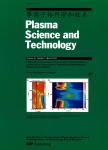Modeling Density and Anisotropy of Energetic Electrons Along Magnetic Field Lines
Modeling Density and Anisotropy of Energetic Electrons Along Magnetic Field Lines作者机构:Department of Physics and Electronic Sciences Changsha University of Science and Technology Changsha 410076 China State Key Laboratory of Space Weather Center for Space Science and Applied Research Chinese Academy of Sciences Beijing 100080 China State Key Laboratory of Space Weather Center for Space Science and Applied Research Chinese Academy of Sciences Beijing 100080 China
出 版 物:《Plasma Science and Technology》 (等离子体科学和技术(英文版))
年 卷 期:2006年第8卷第3期
页 面:279-284页
核心收录:
学科分类:07[理学] 070202[理学-粒子物理与原子核物理] 0702[理学-物理学]
基 金:supported by National Natural Science Foundation of China (Nos. 40474064, 40404012) the Scientific Research Foundation for ROCS, SEM the Outstanding Youth Foundation of the Education Bureau of Hunan Province (No. 04B003)
主 题:number density anisotropy distribution function magnetic field line
摘 要:The electromagnetic wave growth or damping depends basically on the number density and anisotropy of energetic particles as the resonant interaction takes place between the particles and waves in the magnetosphere. The variance of both the number density and anisotropy along the magnetic field line is evaluated systematically by modeling four typically prescribed distribution functions. It is shown that in the case of "the positive anisotropy" (namely, the perpendicular temperature T⊥ exceeds the parallel temperature T||), the number density of energetic electrons always decreases with the magnetic latitude for a regular increasing magnetic field and the maximum wave growth is therefore generally confined to the equator where the resonant energy is minimum, and the number density is the largest. However, the "loss-cone" anisotropy of the electrons with a "pancake" distribution or kappa distribution keeps invariant or nearly invariant, whereas the "temperature" anisotropy with a pure bi-Maxwellian distribution or Ashour-Abdalla and Kennel's distributions decreases with the magnetic latitude. The results may provide a useful approach to evaluating the number density and anisotropy of the energetic electrons at latitudes where the observation information is not available.



